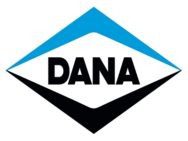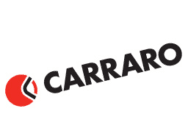 Like the majority of the inventions throughout history, the torque converter arose out of a desire for convenience and efficiency. It became apparent to designers that internal combustion engines were not transferring the full amount of power being produced into used energy. On top of this fact, the torque of the engine was only be controlled in a rudimentary fashion. In order to solve the problem, the torque converter came into existence. They first enjoyed widespread use in locomotives and strictly diesel units. However, as the advantages of the torque converter became apparent, it began to be installed in vehicles of all sizes and levels of complexity. The invention of the automatic transmission for cars and trucks is when the invention really hit its stride. With the popularity of this form of transmission, there was also a great deal of incentive to develop the technology that was governing the device’s performance.
Like the majority of the inventions throughout history, the torque converter arose out of a desire for convenience and efficiency. It became apparent to designers that internal combustion engines were not transferring the full amount of power being produced into used energy. On top of this fact, the torque of the engine was only be controlled in a rudimentary fashion. In order to solve the problem, the torque converter came into existence. They first enjoyed widespread use in locomotives and strictly diesel units. However, as the advantages of the torque converter became apparent, it began to be installed in vehicles of all sizes and levels of complexity. The invention of the automatic transmission for cars and trucks is when the invention really hit its stride. With the popularity of this form of transmission, there was also a great deal of incentive to develop the technology that was governing the device’s performance.
The Birth of the Modern Converter
In the 1950’s, we were witness to the birth of the modern converter, paving the way to advance designs such as the Twin Disc torque converter. This device is essentially a kind of fluid-coupling component that transfers rotating power from an internal engine source, typically combustion, to some form of gearbox or drive shaft. The concept is simple yet it leads to countless advances in the ability of an engine to carry larger and larger loads. The designs continued to increase in sophistication, leading to the development of lock-up functioning. Though briefly unpopular because of the resulting inefficiency in fuel consumption, further refinements were made to put the device back in the limelight for automotive manufacturers.
The Creation of the Twin Disc Torque Converter
Custom converters also found niche markets in the racing world as well. Most of these components were standardized for mass automotive production, however, finding custom-built components today is not unusual. Many of the advances in torque converter technologies were made in European countries. The Twin Disc torque converter is the result of efforts by manufactures in the United Kingdom. They were originally manufactured for diesel locomotives primarily designated for export. The Twin Disc Torque Converter evolved out of the manufacturing processes originally intended only to produce clutches for farm tractors in the 1920’s. The greatest advances in the raw abilities of converters came by addressing the ratios for multiplication of torque. Most devices, including modern-day Allison converters, had to reach some sort of balance between uninterrupted throttle, heat, and levels of efficiency as the power was being transferred.
Allison Converters – Another Example of Progression
Early torque converters were not made to be used for universal applications in the same way that they are today. Allison converters can fit virtually any engine. Conversely, converters of the past had to meet certain specifications or be built directly into the engine. The modern designs that are used by products such as the Allison converter can be produced en mass and shipped worldwide.
For Twin Disc and Allison Torque Converters, Contact K&L!
If you’re wanting to see for yourself what the modern torque converter is capable of achieving in your industrial machinery, contact K&L and our experts will set you up with the perfect torque converter for your needs! We’ve got the best team of mechanics in the business, we’re available 24/7, and we can meet you wherever you need to get you up and running with a new torque converter in no time!
For 24/7 Expert Service, Contact Us!
























